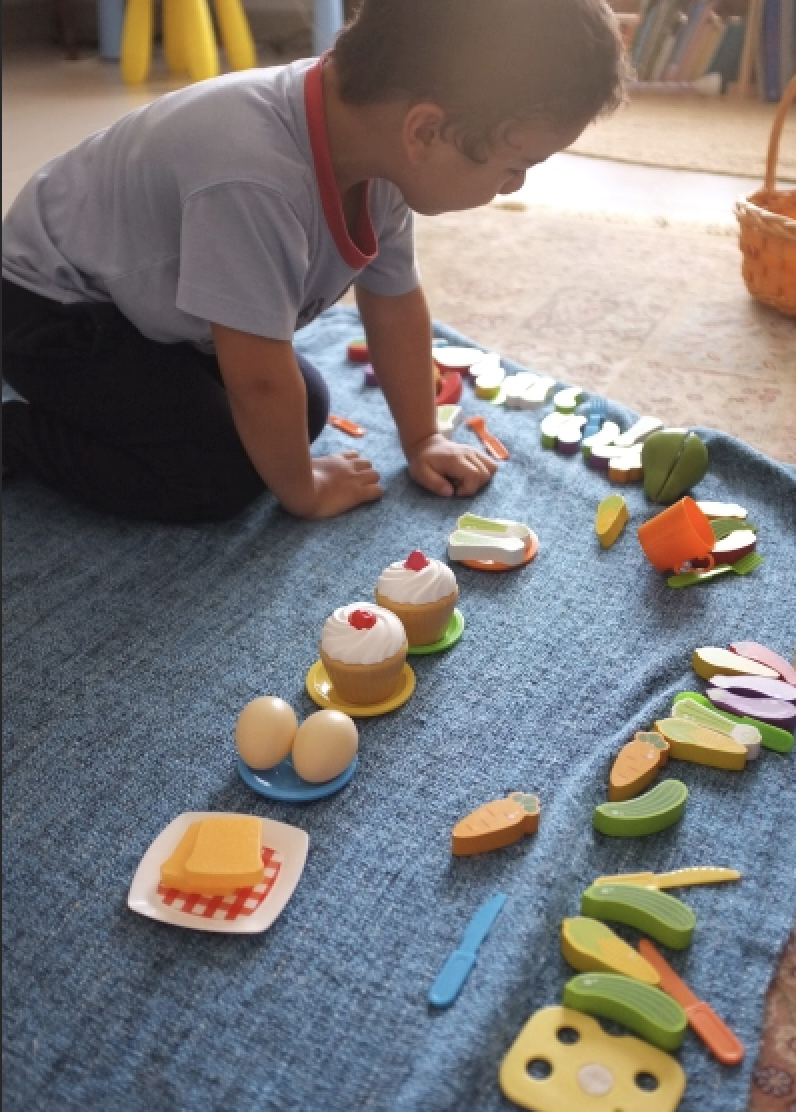Incidental Learning
Incidental learning or informal learning is learning that takes place without the intent to learn.
It's easy to teach your child based on what interests them at that moment and to sneak in some of those basic concepts and some extra vocabulary in a stress free and fun way. No need for detailed planning, just go with the flow. I'm not one for plans so my school day with Hisham is basically whatever interests him and these days it's 'Charlie and Lola'. It's cool that after watching this he speaks with a cool accent and uses proper words like 'It's absolutely, positively ruined!', and he's only 5, Mashaallah. So have a read and see how you can divert your child's attention if you need to, from watching the iPad to some fun activities. In this case, I didn't even have to divert him, he asked to do this activity after watching the video.
The Indoor Picnic
Hisham wanted to have an indoor picnic after watching Charlie and Lola have one on a rainy day. It wasn’t raining here. In fact, it was very hot so an indoor picnic suited me just fine.
He said we needed to have a picnic blanket so we used our ever handy Ikea blanket. Then he used a picnic basket to collect all his play food or fake food as he calls it to bring on his picnic. He made sure that he took his toaster with him. I told him he probably couldn’t use his toaster because there wouldn’t be any way to plug it in the socket. He didn’t know what a socket was so I showed it to him (Notice how I sneaked in a new word here?) Hisham said we needed his toaster anyway :)
He brought so much food. We had carrots, zucchinis cucumbers, ice cream and all kinds of stuff for our picnic. He insisted on arranging all the plates, food and cutlery before I was invited to join him. When I finally sat down with him, we had a delicious meal then I decided this would be perfect to play a memory game.
The Memory Game
First, I arranged 2 empty plates. Then I told him what food I wanted to eat. I told him I was only going to say this once, so listen carefully. I said 'Hisham, I’d like to have a cupcake and a carrot please.’ (Notice the complete sentence and the 'please' at the end?) He would search for these foods. It was pretty easy for him. Then I added one more empty plate and I asked for 3 foods. Sometimes, it was hard for him to remember what I wanted and I had to repeat the order but after a while he got pretty good at it. Then we increased the number of plates to 4 and then after that 5 plates.
The Experiment
By this time, he was tired of playing the memory game so we decided to have some ‘ice-cream’, but 'Oh no! One of the ice-cream scoop was squished', so I decided it was time for an experiment. This was a new word for Hisham so he asked me ‘What is an experiment?’. ‘Come and I’ll show you’ was my reply. We headed for the kitchen and I started boiling some water in our hot water kettle. I took the time to explain to Hisham that hot water is very hot and dangerous so he must be very careful and stand back when I’m pouring it. He noticed the steam coming up and said "Look Mama, there's smoke". I told him that it was called 'steam' when it comes from hot water and held his hand above the dish to feel it. I explained that feeling steam to close could hurt him just as bad as hot water so he had to be careful with it too. The water boiled and we poured it onto the ice cream scoop but nothing happened. Could it be because it had a hole it in and the hot air was escaping the plastic ball? So I covered the hole with tape and tried again. Nothing! We needed some drastic measures! On to the stove to boil our little ice-cream ball! I had to have him stand back for this part and explained what I was doing. The water boiled and voila! It worked! Hisham was excited to see that his ice cream was all nice and round again. That’s one nice ice cream scoop and a happy boy!
Note of Caution: Not all young kids can stay still near hot stuff so take the necessary measures to ensure that your child is safe at all times but can still observe the experiment. Remember, safety first!
What has he learnt today?
This activity teaches younger kids, numbers (count the plates and food), good manners (please and thank you) and some new words ; socket, experiment and steam. The experiment introduces them to science and how to conduct a simple experiment. Use words like 'First, Next etc to show the order of the experiment and encourage your child to do the same by asking him after the experiment what he did first and next etc...you get the point and you'd have improve his sequencing skills too!
There's so many ways you can teach your child and I hope this article showed you how learning can be incidental and fun!

